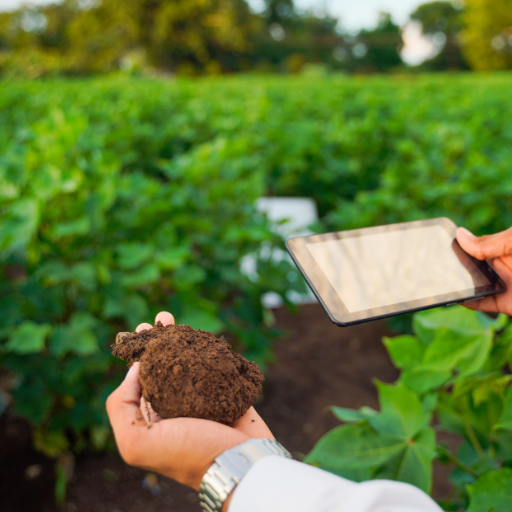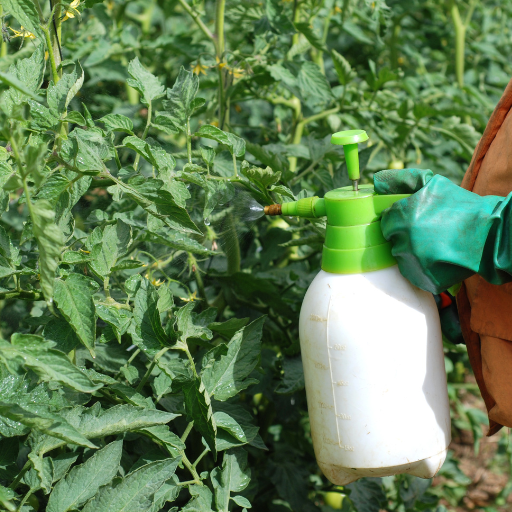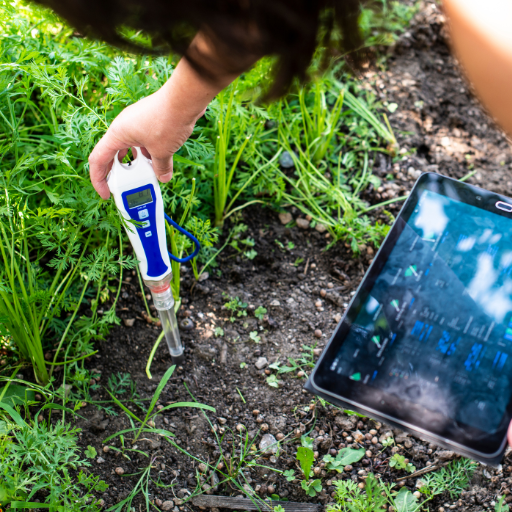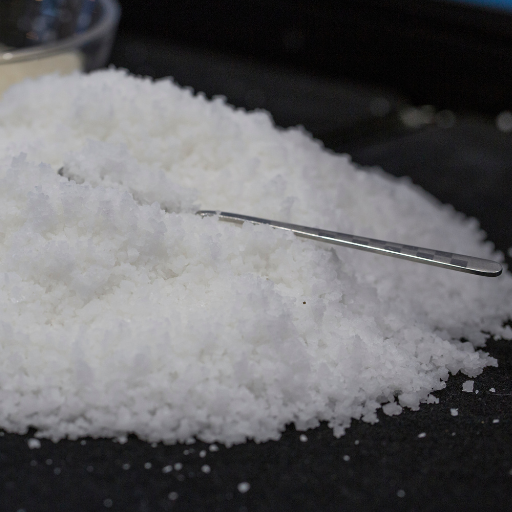The chemical name of Epsom salt is magnesium sulfate, which has a great role in tomato plant cultivation. It comes in handy during some stages of plant growth and specific soil conditions. Timings and ways of using Epsom salt to improve the health and productivity of tomato plants will be tackled in this article. We will also explain why tomatoes need magnesium and sulfur and how their addition can help with problems like yellowing leaves or fruits that don’t grow well. Moreover, we’ll supply the right amount to be given so that the best results are achieved; an elaborate guide is sought by experts and individuals learning about gardening for the first time.
Understanding Epsom Salt and Tomato Plant Health
Epsom salt contains two vital elements i.e. magnesium and sulfur. Magnesium is very important in photosynthesis because it is one of the main components in the chlorophyll molecule. Magnesium deficiency usually causes interveinal chlorosis which turns the tissue between leaf veins yellow while the veins remain green. However, sulfur forms some amino acids and enzymes, which is also an essential element. In this regard, deficient sulphur levels in tomato plants can cause stunted growth and poor fruit quality.
Tomatoes require Magnesium
Magnesium is essential to tomatoes because it is critical for photosynthesis. It constitutes the central part of chlorophyll molecule that helps plants to convert sunlight into energy required for their growth and development. Inadequate magnesium prevents solar energy use by tomato plants leading to retarded growth rates of these crops (Poovaiah & Leopold, 1973). The plant’s overall health and productivity are affected negatively as a result of interveinal chlorosis which leads to yellowing of tissues between veins whereas veins themselves remain green. Epsom salts ensure that there is sufficient amount of magnesium in the soil thus promoting lush foliage resulting from highly productive fruits.
Symptoms of Low Magnesium Levels
Several unique indicators show signs of diminished magnesium levels in tomatoes (Graham et al., 1992). Interveinal chlorosis – whereby intercostal tissues turn yellow while leaf veins remain green – happens first on aging leaves as younger leaves absorb more nutrients including Mg (Poovaiah & Leopold, 1973). Additionally, curling of leaves occurs where their edges start rolling up introducing eventual necrosis if left unchecked. Some affected leaves may also appear mottled due to uneven distribution of chlorophyll molecules within them (Graham et al., 1992). Technically, less than 0.25% Mg concentration among dried plant tissue indicate deficiency; below 0.2% can hurt photosynthesis & vigor. Taking soil samples on regular basis is important for maintaining optimum levels of magnesium hence healthier and more productive tomatoes.
Epsom Salt’s Role in Correcting Deficiencies
Magnesium deficiency in tomato plants can be corrected through the use of Epsom salts, which is another name for magnesium sulfate. When applied to the soil or used as a foliar spray, Epsom salt acts as an immediate source of Magnesium, which is necessary for chlorophyll synthesis and photosynthesis (Poovaiah & Leopold, 1973). In case it is meant to be applied to the soil, the recommended application rate is one tablespoon per foot-plant height mixed with enough water to allow total moistening of the soil around the plant followed by thorough watering. However, two tablespoons of Epsom salt should be dissolved in a gallon of water and sprayed directly onto the leaves. This guarantees fast absorption of magnesium so as to correct any insufficiencies quickly, hence favoring the growth of healthier and stronger plants (Graham et al., 1992). Periodic monitoring coupled with balanced fertilization helps to prevent relapse thereby maintaining good health among plants while ensuring quality produce.
Growth Stages of Tomato Plants Requiring Epsom Salt

The necessity for Epsom salts varies during the different growth stages of tomato plants. Epsom salt is not generally required during germination and seedling stages because the plant’s food requirement is very minimal and can be satisfied adequately by the seed itself. Nonetheless, as tomatoes progress into their vegetative stage, magnesium demand increases in response to rapid stem and leaf development. At this stage in the plant’s life cycle, particularly when soil tests reveal low levels of magnesium, applying Epsom salt either through foliar or soil application can improve chlorophyll production thereby leading to healthy development of plants. During flowering and fruiting periods, magnesium demands peak due to its indispensable role in photosynthesis as well as nutrient transportation to developing fruits. Regular applications throughout these phases ensure that the plant maintains optimal health and productivity thus guaranteeing improved fruit set and quality. Continuous monitoring along with timely applications of Epsom salt help balance nutrients during a plant’s growth cycle.
Pre-Planting Preparation & Soil Amendments
Appropriate pre-planting preparation and soil amendments are essential for creating optimum conditions for tomato plant growth. The first step involves performing a soil test to check pH level and nutrient content. Tomatoes prefer slightly acidic soils with a pH range of 6.0-6.8.If it is below or above this, one may adjust its acidity by adding sulfur or lime respectively.
Improving soil structure and fertility is also important next step. Add organic matter like compost or well rotted manure into the soil so as to improve texture, water-holding capacity as well as nutrient content. A general rule would be mixing about 3-4 inches of organic matter into 6-12 inches deep in soil profile. In addition, an all-purpose fertilizer having N-P-K ratio of 10-10-10 can be applied at a rate of 1-2 pounds per 100 square feet depending on initial soil fertility as shown in the results of the soil testing.
Proper spacing is important for healthy tomato plants. Indeterminate varieties should be spaced 24-36 inches apart, while determinate varieties can be spaced 18-24 inches apart. This will maintain sufficient air circulation and reduce the chances of diseased plants.
By following such technical parameters and justified recommendations during pre-planting preparation and soil amendments one sets a good foundation for healthy growth and high productivity of tomato plants.
Application During Early Growth Phases
This is of particular importance during early growth phases when watering, nutrient supply and support structures must be attended specifically to promote strong development in tomatoes. Water deeply at first to ensure that the soil remains evenly moist but not waterlogged so that you maintain constant moisture in your soil. Avoid overhead watering to reduce incidence of foliar diseases; use drip irrigation or soaker hoses instead.
Regarding nutrient management, focus on providing a balanced feed during these early stages. Starter fertilizers rich in phosphorus should be applied to encourage root development. A liquid fertilizer with well-balanced N-P-K like 10-10-10 can be used at a diluted rate of about 1 tablespoon per gallon of water, which should be applied every fortnight after every two weeks.
Early in the growing season, insert sticks or cages to support plants. Stakes must be 6 to 8 feet tall and driven at least one or two feet into the ground; these should be placed about four inches away from the base of the plant. Cages need to be robust and at least 5 ft in height to allow indeterminate types to grow.
More so, maintaining is an important part of it. Inspect your garden regularly and practice integrated pest management by removing damaged foliage, using row covers, and applying organic or chemical controls as needed for pests.
Tomato plants will have strong, healthy growth during their critical early development phases if they follow these methods and detailed parameters.
Mid-Season Application for Fruit Development
During mid-season focus is on improving fruit development through specific watering and nutrient strategies alongside pest and disease control measures implemented carefully.
Watering tomato plants requires a consistent moisture supply that keeps them from getting blossom end rot and cracking fruits. You also must have a watering schedule that provides around one or two inches of water per week from rainfall or supplementary irrigation. To conserve water while controlling temperature, mulch can be employed within the root zone.
Balanced fertilizers are used for nutrient management at this stage. It is advisable to use a mid-season fertilizer with an N-P-K ratio of either 5:10:10 or 3:4:6. The low nitrogen content, as opposed to higher phosphorus and potassium, helps in normal fruit development without excessive leafy growth. Side-dress by banding fertilizer around the plant approximately 6 inches away from the stem, working gently with the soil.
Pest control remains vital, along with disease management. Aphids, whiteflies, and tomato hornworms are common pests, especially where IPM techniques are applicable, including insecticidal soaps, neem oil, or even biological controls such as ladybugs. Routine checks should be done for diseases like early blight, late blight, and powdery mildew. Application of proper fungicides and removal of affected leaves will help control the spread of these disease conditions.
Tomato plants can produce healthy, abundant fruit all season long by following these detailed mid-season care practices.
Soil and Plant Conditions Influencing Epsom Salt Use

Epsom salt, or magnesium sulfate, is commonly utilized in horticulture for the purpose of treating specific plant and soil disorders. Magnesium is a critical element for tomato plants as it plays a key role in chlorophyll production and enzyme activities. If soil tests show that there is low magnesium in the soil, Epsom salt can be used to address this issue. Signs of magnesium deficiency in plants include leaves turning yellow with green veins between them (interveinal chlorosis). However, it can only be used under certain conditions; excessive use without proven deficiency can lead to nutrient imbalances. Epsom salt works best on sandy or acid soils that are prone to magnesium leaching. To immediately cure such deficiencies, dissolve 1-2 tablespoons of Epsom salt in a gallon of water and apply around the base of the plant or use it as foliar spray.
Soil Strata Prior To Application
To monitor the balance of nutrient levels and promote healthy growth, assessing soil composition before applying Epsom salt is necessary. For starters, get an elaborate soil test which could be accessed through local agricultural extension services or commercially available testing kits. The test measures pH, macronutrient levels (NPK), and essential micronutrients such as magnesium. It’s crucial to interpret results accurately; excess supplementation with Epsom salt may result into nutrient lockout if enough Mg was already present in the soil sample tested. Regular monitoring is recommended for soils with higher leaching potential like sandy soils. Additionally, looking at symptoms exhibited by plant leaves such as interveinal chlorosis will indicate their need for Mg.. By carefully addressing the constitution of soils gardeners can customize their fertilization practices to suit optimum growth conditions.
Plant Health And Nutrient Uptake Monitoring
A mix of visual checks as well as conducting a soil test is vital when determining whether plants have taken up enough nutrients required for proper growth. Visual cues such as leaf color, growth patterns, and general vigor may give a hint of any initial nutrient deficiencies or imbalances. In some cases, yellowing of leaves or stunted growth is indicative of specific nutrient deficiencies. Periodic soil testing helps to accurately determine levels of nutrients and pH that can affect availability of nutrients. Soil moisture meters, pH testers and nutrient test kits are just examples of the tools necessary for consistent evaluation. Furthermore, plant respiration rates and photosynthesis rates can be used to establish a plant’s nutritional efficiency and its health status. Hence, updating the amendments regularly in line with this enables the maintenance of proper balance in the quantities, thereby supporting strong health and robustness.
Environmental Factors That Affect Nutrient Availability
Soil environmental factors have a major influence on nutrient availability, determining plant growth and development. The most important factor is soil pH, which determines solubility plus bioavailability of nutrients; soils with a pH ranging between 6.0 and 7.5 typically provide high bioavailability for the majority of nutrients. Also, temperature plays an important role since it slows down microbial activity during extreme weather conditions, thereby reducing the rate at which nutrients are mineralized. Moreover, the uptake of nutrients by plants is directly determined by soil moisture content, whereby water-logged or dry soils hinder root functions, including absorption capabilities, thus impinging on nutrient availability. Organic matter, as well as the structure, affects the movement and release of nutrients through increasing cation exchange capacity (CEC) that facilitate optimal root development besides improving access to foods for plants through enhancing soil aeration at all times . Wind action causes erosion that washes away topsoil thereby depleting it off essential elements like nitrogen contained in organic substances within it. Finally, different intensities or durations of light would alter photosynthesis rates hence affecting overall demand for minerals by plants themselves . Manipulating these environmental factors through appropriate soil management techniques can achieve optimum nutrient supply to crops grown on such fields..
Applying Epsom Salt via Soil Drench or Foliar Spray

Epsom salt, also known as magnesium sulfate by its chemical name, can be applied through soil drench or foliar spray to address plant magnesium deficiencies. Epsom salt should be dissolved at a rate of 1 to 2 tablespoons per gallon in water for a soil drench and the solution applied around the plant base. This method allows direct absorption of magnesium into the root system of the plant thereby enhancing nutrient uptake efficiency. For foliar spraying, dissolve in one gallon of water, one tablespoonful of Epsom salts and with this, spray it onto your plant leaves using a spray bottle. This technique promptly supplies magnesium via the foliage hence is an immediate remedy for lack.In case you continuously use controlled amounts of Epsom salt then there will always be enough supply of magnesium important for healthy growth and development.
Methods for Incorporating Epsom Salt into Soil
- Broadcasting and Watering In: This involves evenly broadcasting Epsom salt over the soil surface at about 1 pound per 100 sqft followed by thorough watering to aid absorption. It works well over large areas and garden beds where thorough watering ensures that magnesium sulphate is dissolved and carried to the root zone for plant uptake.
- Banding at Planting: When planting seeds or seedlings, bands of Epsom salt can be made along rows. The recommended rate is one tablespoonful per foot of row placed directly into the planting furrow before covering with soil. With this approach, young plants have immediate access to magnesium, promoting early root development.
- Soil Amendment in Container Gardening: For potted plants and container gardens, mix Epsom salt directly into the potting soil when planting. A standard rate is 1-2 teaspoons per gallon of soil. The growing medium has a consistent supply of magnesium, which is helpful in preventing confined space deficiency.
Correct Dilution Rates for Foliar Application
For effective foliar application, one needs to observe the correct dilution rate of Epsom salt to optimize magnesium absorption without damaging plant tissues. It is commonly suggested that 1-2 tablespoons of Epsom salts should be used in one gallon of water. Concentration at this level ensures a solution with enough strength to address Mg deficiencies while remaining gentle on the leaves. Spraying should be done either early in the morning or late in the afternoon to avoid the intensity of midday sun, which can lead to leaf burn. Consistency is key; hence, applying this solution every two weeks can maintain adequate magnesium levels in plants.
Best Practices for Effective Nutrient Absorption
Adopting best practices is essential to maximize nutrient absorption, particularly when using Epsom salt. Firstly, soil tests need to be carried out before applying Epsom salt to confirm whether there are already existing nutrient levels and pH balance that require more magnesium addition. Most plants have an optimum pH range for uptake of nutrients between 6 and 7; therefore, adjusting soil can make Epsom salt application more effective overall.
Correct irrigation procedures also play a critical role in absorbing nutrients. It is advisable to water your plants deeply but seldom to promote a strong root system capable of efficiently absorbing nutrients. When using Epsom salt, keep the soil moist but not drenched, as an excessive amount of water can easily wash away nutrients from the root zone.
Also, timing plays a key role when applied to Epsom salt absorption. For foliar sprays, it’s better to do them in early morning or late afternoon hours to prevent evaporation and leaf burning due to extreme temperatures. There needs to be a balance between their usage rates; usually, foliar sprays should be done every two weeks, and land applications should be monthly.
Lastly, incorporating organic matter into the soil improves its structure, increases nutrient retention, and increases overall availability. Composts and mulches are also rich in minerals that enhance the general well-being of soils, hence facilitating effective magnesium uptake from Epsom salt application. By following these practices, we will have healthy plants that yield more and a more adaptable garden ecosystem.
Monitoring and Adjusting Epsom Salt Application

To ensure that the application of Epsom salt is correctly timed and adjusted, conduct a soil test to determine present levels of magnesium and overall soil health. This data will serve as a base line for comparison after Epsom salt treatments Track plant responses to the application such as better colour in foliage, faster growth rates and more vigour in general indicate that nutrients have been taken up successfully. Conversely yellowing leaves or stunted growth can be an indicator of imbalances or over application.
Moisture levels in the soil need to be observed constantly so that irrigation practices are adjusted accordingly to prevent leaching of nutrients If necessary, employ moisture meters for optimal soil conditions. Also leaf tissue analysis at intervals would help detect any magnesium deficiencies or excesses thus allowing some control over the timing and quantities used while applying. When followed, these practices allow for making data-driven decisions which optimize the use of Epsom salt thereby ensuring maximum plant health.
Techniques for Soil Testing and pH Balancing
Soil testing provides vital information on nutrient content, pH level and composition without which tailoring amendments like Epsom salts would not be possible Begin by collecting samples from different garden areas approximately 6-8 inches deep to get a representative sample Use a soil testing kit or send it out for laboratory analysis by certified professionals Regular tests done every two to three years; guarantee continued fertility and health of your soil.
If the soil has a very low pH (acidic), lime can be added to raise it, leading to high uptake of magnesium among other essential minerals. Conversely, sulfur or acidifying fertilizers lower pH in alkaline soils, making them suitable for plant growth. Aim at pH ranging between 6.0 and 7.0 with most garden plants. Adjustments must be gradual since abrupt changes may disrupt the microbial population within the topsoil, causing imbalance within it.
Response of Tomato Plants to Application of Epsom Salt
The response of tomato plants to the use of Epsom salt (magnesium sulfate) is very evident. At first, the plant produces more chlorophyll due to Epsom salt, which improves photosynthesis and increases synthesis. The result will be greener, more vibrant leaves, which is essential for better general plant vigor. Other sources suggest applying one tablespoon of Epsom salts per gallon of water every 4-6 weeks effectively corrects magnesium deficiency in tomatoes.
Magnesium contained in Epsom salt has been found to play a significant role in nutrient uptake as it supports essential nutrition mechanisms, especially when soil nutrients are not at an optimum level. This helps them rectify magnesium deficiencies through rapid absorption by spraying their leaves with a solution of Epsom salt. Another point worth mentioning here is that there is additional sulphur contained in Epsom salt; which serves as a building block for amino acids and proteins used during fruit formation resulting in improved taste.
Adjusting Application Frequency Based on Plant Needs
To change the frequency of applying Epsom salt based on plant needs, you must carefully monitor and assess your plants’ health and growth conditions. Magnesium deficiency can be detected by signs such as yellowing leaves with green veins, reduced growth rate, or even poor fruit set. A regular soil test can also help determine if there are any magnesium problems and if further supplementation may be required.
Increasing the frequency of Epsom salt applications to every two to four weeks could be helpful in situations where signs of magnesium deficiency are observed. However, an overabundance of magnesium can result in nutritional imbalances, particularly with respect to calcium and potassium. Therefore, it is important to customize the dose and rate as per tomato crop requirement and prevailing soil conditions. Integrating other fertilization practices with Epsom salt application balances nutrient management across the board and promotes healthy plant growth and vigor.
Long-Term Benefits and Sustainability Considerations

Long term use of Epsom salt in tomato cultivation has several advantages such as enhanced plant vigor, improved fruit quality and increased productivity. The Epsom salt applications maintain the required magnesium and sulfur levels which are essential for enzyme activities and chlorophyll synthesis to enhance photosynthesis and energy production. To prevent soil nutrient imbalances, sustainable Epsom salt utilization is characterized by intermittent monitoring as well as moderation. This strategy is environmentally friendly when combined with organic matter or other natural fertilizers thus enriching soil health and ensuring sustainable agricultural practices. It also addresses the immediate nutritional needs of the tomato plants while enhancing long-term soil fertility and ecosystem stability.
Impact on Overall Plant Health and Yield
The use of Epsom salt has a great impact on overall plant health and yield through nutrient uptake efficiency optimization alongside physiological processing improvement. Magnesium, an important component in chlorophyll, is vital in photosynthesis, the energy transfer process, and the synthesis of crucial enzymes and proteins. Balanced Epsom salts help to address shortages, resulting in vigorous plant growth with higher fruit quality all through the growing season. Deficiency in magnesia generally reduces crop yields by approximately 15-20%.
Sulfur, also present in Epsom salts, plays a major role in forming amino acids and proteins, vitamins that are crucial for metabolic activities within the plant system. Crops that lack sufficient sulphur develop slowly but may suffer disease attacks more frequently, leading to poor performance at the field level.
Practical application recommends a dosage 1 tablespoon (approximately 14 grams) per gallon of water applied bi-weekly throughout the growing season for tomatoes. Soil tests should be done before applying it so as to adjust concentration accordingly in order to avoid any possible nutrient imbalance. Monitoring soil pH, concentration of magnesium (aiming at between 25-50 ppm) and sulfur levels makes sure that use of Epsom salt is not only effective but also sustainable. Inclusion of this practice in organic fertilizers helps sustain soil health for high stable yields and plant resilience.
Sustainable Practices in Tomato Plant Nutrition
Some of the sustainable practices used in tomato plant nutrition entail practices that are utilized to improve productivity while conserving environmental integrity. For instance, crop rotation is a recommended approach since it eliminates chances of soil depletion while at the same time reducing build up of pests through alternating tomatoes with legumes or cover crops which fixes nitrogen. Mulching using organic mulch like straw or wood chips minimizes water loss and improves soil structure, as well as suppresses weed growth. When compost or well-rotted manure, these serve as sources of organic fertilizers that release nutrients slowly, thereby supporting a balanced soil ecosystem. Drip irrigation systems effectively control water application through preventing wastage and avoiding fungal diseases caused by excess humidity. Regular soil testing enables precise adjustment of nutrient management and use of biofertilizers can enhance beneficial microbial activity thus enhancing nutrient availability and tolerance to such stress factors in plants like drought resistance.
Frequently Asked Questions (FAQs)
Q: What are the benefits of using Epsom salt on tomato plants?
A: Epsom salt, which contains magnesium and sulfur, can benefit tomatoes by improving nutrient uptake, aiding in the production of chlorophyll, and enhancing cell walls. This leads to healthier and more robust plants, which can result in a better yield of tomatoes.
Q: How do I add Epsom salt to the soil for tomato plants?
A: You can add Epsom salt to the soil by mixing one or two tablespoons of it per foot of plant height around the base of each tomato plant. This ensures that the magnesium and sulfur are accessible to the plant roots.
Q: Can I use Epsom salt for tomatoes as a foliar spray?
A: Yes, you can use Epsom salt as a foliar spray by dissolving it in water. Mix one tablespoon of Epsom salt in a gallon of water and spray the foliage to quickly provide magnesium and sulfur to your tomato plants.
Q: Is it possible to add too much Epsom salt to tomato plants?
A: Yes, adding too much Epsom salt can lead to an imbalance of nutrients in the soil, which can harm your tomato plants. Overuse may cause issues like an excess of magnesium or sulfur, potentially leading to other deficiencies or poor plant health.
Q: How often should I use Epsom salt for my vegetable garden?
A: For a vegetable garden, including tomatoes, it is recommended to use Epsom salt during the planting phase and then again once during the growing season. Assessing plant health and soil conditions can help determine if additional applications are needed.
Q: What are the signs that my tomato plants need more magnesium or sulfur?
A: Signs that tomatoes need more magnesium include yellowing between the leaf veins and poor fruit development, while sulfur deficiency may cause stunted growth and pale green leaves. Regularly using Epsom salt for plants can help prevent these issues.
Q: Can Epsom salt improve the ripening process of tomatoes?
A: Epsom salt can aid in the ripening process of tomatoes by promoting overall plant health and ensuring the production of chlorophyll. Healthy plants are more likely to have well-developed and timely ripening fruits.
Q: Is Epsom salt beneficial for other vegetables like peppers?
A: Yes, Epsom salt is beneficial for pepper plants as well. Peppers and tomatoes have similar nutrient requirements, and the magnesium and sulfur in Epsom salt support healthy growth and fruit production in both types of plants.
Q: Are there any alternatives to Epsom salt for providing magnesium to tomato plants?
A: Dolomite lime is an alternative that can provide magnesium to tomato plants. It also supplies calcium and can help to adjust soil pH, making it a good option to consider alongside Epsom salt based on your garden’s specific needs.






